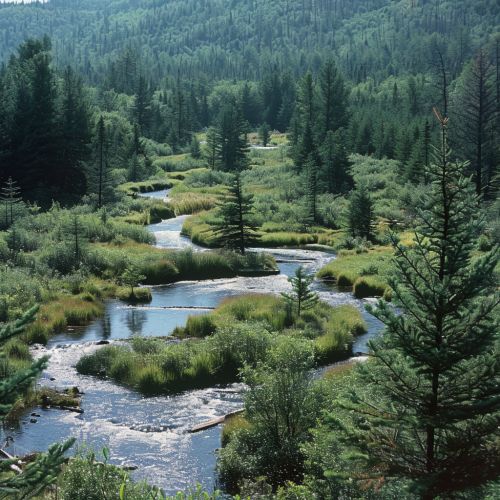Hydrological succession
Introduction
Hydrological succession refers to the series of changes that occur in the hydrological characteristics of a landscape over time. This process is influenced by a variety of factors, including climate change, human activity, and natural disturbances such as fires or floods. Understanding hydrological succession is crucial for managing water resources, predicting flood risks, and conserving aquatic ecosystems learn more.


Factors Influencing Hydrological Succession
The hydrological succession of a landscape is influenced by several factors, which can be broadly categorized as either natural or anthropogenic.
Natural Factors
Natural factors include climatic conditions, topography, soil type, and vegetation cover. Changes in these factors can lead to alterations in the hydrological cycle, affecting the distribution and movement of water within a landscape.
Climatic Conditions
Climatic conditions, particularly precipitation and temperature, play a significant role in hydrological succession. Changes in climate can alter the amount and distribution of rainfall, leading to changes in the flow patterns and water availability in a landscape learn more.
Topography
The topography of a landscape, including its slope and elevation, can influence the direction and speed of water flow. Changes in topography due to natural processes such as erosion or deposition can lead to shifts in the hydrological characteristics of a landscape.
Soil Type
Soil type affects the infiltration and retention of water in a landscape. Different soil types have varying capacities to absorb and hold water, influencing the amount of water that is available for plant uptake and groundwater recharge learn more.
Vegetation Cover
Vegetation cover plays a crucial role in hydrological succession. Plants can influence the hydrological cycle through processes such as evapotranspiration and interception. Changes in vegetation cover, due to factors such as succession or disturbance, can lead to changes in the hydrological characteristics of a landscape learn more.
Anthropogenic Factors
Anthropogenic factors refer to human-induced changes that can influence hydrological succession. These include land use changes, deforestation, urbanization, and climate change.
Land Use Changes
Changes in land use, such as the conversion of forests to agricultural land or urban areas, can significantly alter the hydrological characteristics of a landscape. These changes can affect the amount and distribution of water, leading to changes in the hydrological cycle learn more.
Deforestation
Deforestation can lead to significant changes in the hydrological cycle. The removal of trees can reduce evapotranspiration and increase runoff, leading to changes in the water balance of a landscape learn more.
Urbanization
Urbanization can lead to changes in the hydrological characteristics of a landscape. The construction of impervious surfaces, such as roads and buildings, can increase runoff and reduce infiltration, leading to changes in the hydrological cycle learn more.
Climate Change
Human-induced climate change can have significant impacts on hydrological succession. Changes in temperature and precipitation patterns can alter the hydrological cycle, leading to changes in the distribution and availability of water learn more.
Stages of Hydrological Succession
Hydrological succession typically involves several stages, each characterized by distinct hydrological characteristics.
Initial Stage
The initial stage of hydrological succession is characterized by a relatively high runoff and low infiltration. This is due to the lack of vegetation cover, which reduces the capacity of the landscape to retain water.
Intermediate Stage
As vegetation cover increases, the landscape enters the intermediate stage of hydrological succession. This stage is characterized by a decrease in runoff and an increase in infiltration, as the growing vegetation helps to retain water.
Mature Stage
The mature stage of hydrological succession is characterized by a balance between runoff and infiltration. At this stage, the landscape has a well-developed vegetation cover, which helps to regulate the hydrological cycle.
Implications of Hydrological Succession
Understanding hydrological succession has several important implications for water resource management, flood risk prediction, and ecosystem conservation.
Water Resource Management
Knowledge of hydrological succession can help in the effective management of water resources. By understanding how changes in factors such as climate, land use, and vegetation cover can affect the hydrological characteristics of a landscape, water managers can make informed decisions about water allocation and use learn more.
Flood Risk Prediction
Hydrological succession can influence flood risks. Changes in the hydrological characteristics of a landscape can alter the frequency and magnitude of floods. Understanding hydrological succession can therefore help in predicting and managing flood risks learn more.
Ecosystem Conservation
Hydrological succession can have significant impacts on aquatic ecosystems. Changes in the distribution and availability of water can affect the health and diversity of aquatic species. Understanding hydrological succession is therefore crucial for the conservation of aquatic ecosystems learn more.
